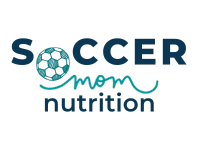Iron for Athletes: Comprehensive Guide to Support Performance
Are you looking for ways to improve your athletic performance and health? If so, you need to pay attention to the importance of iron for athletes.
Iron is a vital mineral that supports oxygen transport, energy production and immune function in the body.
In this comprehensive guide, you will learn everything you need to know about iron for athletes, including:
- The role of iron in the body and how it affects athletic performance
- The recommended iron intake for different age groups and genders
- The signs and symptoms of iron deficiency and how to prevent it
- The best strategies to boost your iron intake through diet
- The best sources of iron from both animal and plant foods
By the end of this guide, you will have a clear understanding of how to optimize your iron levels and enhance your athletic potential.
Let’s get started!

Iron’s role in the body
Your body uses iron to make hemoglobin, a protein in red blood cells that carries oxygen from the lungs to tissues throughout the body.
As part of a protein called myoglobin, iron helps carry oxygen to store in your muscles for use during exercise and supports your muscles to burn fuels for energy.
Iron is essential for maintaining normal immune function, cognitive development, hormones and growth. (1)
Adequate iron levels are needed to optimize oxygen transport and energy production.
Iron deficiency can impact these functions and lead to symptoms such as fatigue, weakness, shortness of breath, poor concentration, increased risk of infections and reduced endurance.
This results in reducing your overall athletic performance.
Recommended iron intake for different age groups
To ensure optimal iron levels, it is important to understand the recommended dietary intake (RDI) of iron for different age groups.
| Age Group | Men (mg/day) | Women (mg/day) |
| 4-8 years | 10 | 10 |
| 9-13 years | 8 | 8 |
| 14-18 years | 11 | 15 |
| 19-50 years | 8 | 18 |
| 51+ years | 8 | 8 |
*Note that these values are based on the average dietary iron absorption of 18% for non-vegetarians and 10% for vegetarians. If you have a higher or lower absorption rate, you may need more or less iron than the RDA.
Athletes at risk for iron deficiency
Athletes, especially those involved in endurance sports such as long-distance running, are especially susceptible to iron deficiency.
Additionally, athletes experience increased red blood cell turnover and hemolysis (breakdown of red blood cells) due to intense exercise.
Factors contributing to increased risk of low iron include the high iron demands of intense exercise, iron losses through sweat and inadequate iron intake.
Some factors that increase the risk of iron deficiency among athletes are:
- Low dietary intake of iron-rich foods
- Vegetarian or vegan diet
- Heavy menstrual bleeding (female athletes)
- Endurance sports (such as running, cycling, swimming)
- High-altitude training
Iron deficiency can negatively affect athletic performance by reducing oxygen delivery to the muscles, decreasing energy production, impairing muscle function and increasing fatigue.
Therefore, it is important to monitor your iron status regularly and take preventive measures to avoid iron deficiency.
How to boost iron intake
Heme vs non-heme
The best way to boost your iron intake is to eat a balanced diet that includes a variety of iron-rich foods. There are two types of dietary iron: heme and non-heme.
Heme iron is found only in animal products such as meat, poultry, fish and eggs. (2) Nonheme iron is found in plant foods such as beans, lentils, nuts, seeds, grains, fruit and vegetables.
Heme iron is more readily absorbed by the body than non-heme iron.
However, you can enhance the absorption of non-heme iron by consuming it with foods that contain vitamin C (such as citrus fruits, berries, tomatoes, peppers) or heme iron (such as meat or fish).
Additionally, foods that contain phytates (such as whole grains, legumes), oxalates (such as spinach), polyphenols (such as tea, coffee), calcium (such as dairy products) or zinc (such as supplements) can affect absorption of non-heme iron.
These substances can bind to non-heme iron and prevent it from being absorbed into the bloodstream. Therefore, it is advisable to consume these foods at least two hours before or after your iron-rich meals.
Recommendations to boost iron
1. Consume iron-rich foods: Incorporate iron-rich foods into your diet, such as lean meats, poultry, fish, legumes, fortified cereals, and dark leafy greens. These foods provide both heme and non-heme iron, which are both essential for the body.
2. Enhance iron absorption: Pair iron-rich foods with vitamin C sources like citrus fruits, berries and bell peppers. Vitamin C aids in the absorption of non-heme iron, maximizing its utilization by the body.
3. Avoid blockers: Limit consumption of foods and beverages high in tannins, such as tea and coffee, as they can hinder iron absorption. Also, calcium-rich foods and supplements should be taken separately from iron-rich meals to optimize absorption.
Best iron sources
To ensure an adequate iron intake, include the following iron-rich foods in your athlete diet:
1. Lean meats: Beef, pork and poultry are excellent sources of heme iron, which is more readily absorbed by the body.
2. Fish and shellfish: Salmon, tuna, and shrimp are rich in iron, as well as omega-3 fatty acids, offering additional health benefits for athletes.
3. Legumes: Beans, lentils, and chickpeas are plant-based sources of iron and provide a good amount of dietary fiber, vitamins and minerals.
4. Fortified cereals: Choose iron-fortified cereals to increase your iron intake. Check the labels for the iron content.
5. Dark leafy greens: Spinach, kale, and Swiss chard are packed with non heme iron, as well as other essential vitamins and minerals.
Conclusion
Iron is a key mineral for athletes, as it supports oxygen transport, energy production, muscle function and immune health.
Athletes need to ensure adequate iron intake from a variety of foods, especially those that contain both heme and non-heme iron.
Iron deficiency can impair athletic performance and health, so it is important to monitor your iron status regularly and take preventive measures to avoid it.
If you have any questions or concerns about your iron intake or status, consult with your doctor or a registered sports nutrition dietitian.
Stay proactive, fuel your body with a well balanced diet and embrace the power of iron in your athletic journey.
Stephanie Magill, MS, RD, CD, FAND has over 22 years of experience in public health and nutrition. As a performance registered dietitian nutritionist, Stephanie specializes in sports nutrition and provides simple and actionable information so that athletes can be well fueled for high performance on and off the field. Stephanie has a Master’s Degree in Nutrition and is a Fellow of the Academy of Nutrition and Dietetics.

